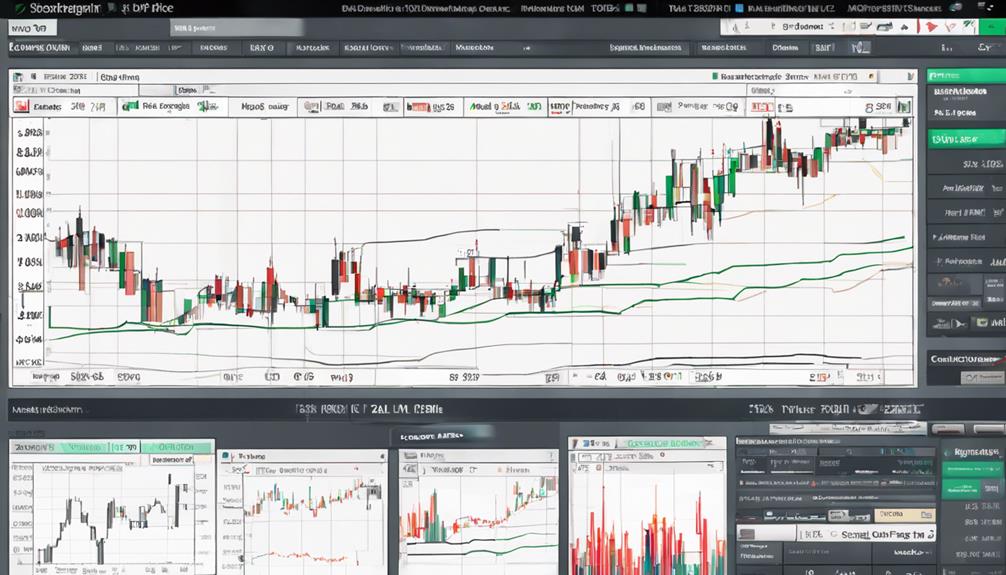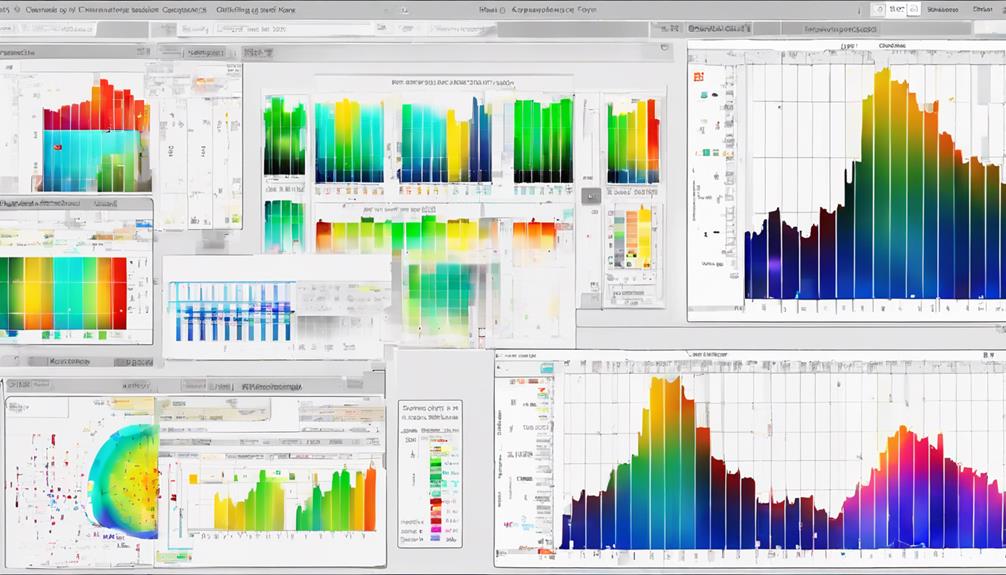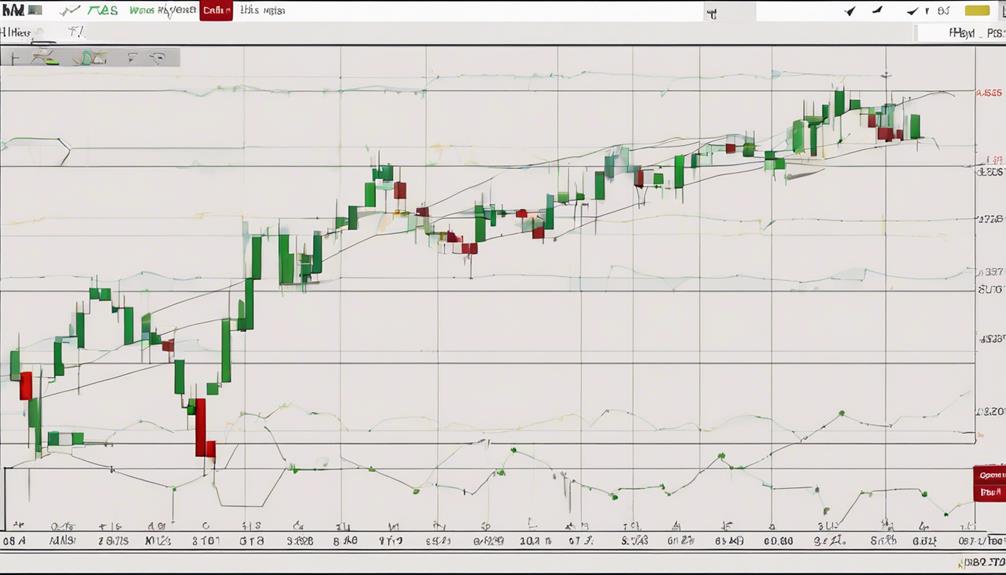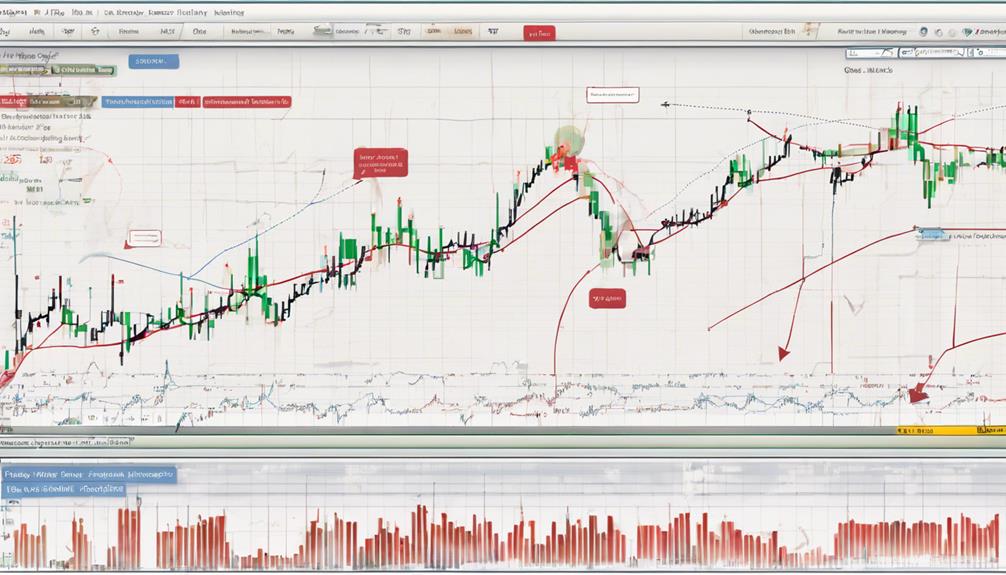In the realm of CMF indicator analysis, navigating around false signals stands as a critical challenge for traders seeking to make informed decisions.
The quest for accuracy in technical analysis often hinges on discerning the nuances that can lead to misinterpretations.
By exploring the intricacies of false signals and the strategies deployed to counteract them, traders can elevate their analytical skills and refine their trading approaches.
Stay tuned to uncover the practical methods and insights that can fortify your understanding and application of CMF indicator analysis.
Understanding False Signals in CMF Analysis
False signals in CMF analysis can arise due to discrepancies between price movements and CMF values, posing a significant risk to traders' financial positions. The Chaikin Money Flow (CMF) indicator, a technical analysis tool that combines price and volume, helps traders assess buying pressure in a security.
However, false signals can occur when the price moves in a certain direction while the CMF suggests the opposite due to timing lags, data irregularities, or calculation algorithms. This discrepancy can mislead traders into making erroneous decisions, leading to financial losses.
To mitigate this risk, traders often rely on strategies that involve aligning multiple indicators to confirm trading signals and avoid acting on false CMF signals. Understanding the economic context behind CMF indicators is also crucial in interpreting them accurately and avoiding false signals in trading.
Traders must be vigilant and consider various factors beyond just the CMF values to make informed decisions and prevent falling victim to false signals in their trading activities.
Common Sources of False Signals

Amidst the complexities of financial analysis, identifying common sources of inaccurate signals in the Chaikin Money Flow (CMF) indicator is essential for traders seeking to make informed decisions. False signals in CMF analysis can frequently arise from erratic price movements or sudden volume spikes. Additionally, inaccuracies in data inputs or calculation errors can significantly contribute to misleading CMF readings. Sudden news events or instances of market manipulation represent other potential sources of false signals in the CMF indicator.
Moreover, misinterpreting the CMF values or overlooking crucial market context can lead to erroneous signals in trend analysis. Traders should be cautious of over-relying solely on the CMF indicator without cross-validating information from other technical indicators. By understanding and recognizing these common sources of false signals, traders can enhance their ability to interpret the CMF indicator accurately and make well-informed decisions when buying and selling assets based on CMF analysis.
Techniques to Filter False Signals

Identifying effective techniques to filter out false signals in CMF indicator analysis is crucial for traders aiming to enhance the accuracy of their trend assessments and trading decisions. One technique to filter false signals is to utilize Renko charts, which help in eliminating noise and focusing on significant trend changes. Additionally, applying Heikin-Ashi charts can convert candlestick charts for clearer trend analysis, aiding in the identification of genuine trend elements. Combining noise-canceling charts with multiple indicators can also improve signal reliability by providing a consensus among indicators.
Calculating Chaikin Money Flow (CMF) values and observing when the indicator crosses the zero line can be instrumental in filtering false signals. Understanding technical indicators and their implications on price action is essential to differentiate between genuine trading signals and false ones. By incorporating these techniques into their analysis, traders can better navigate the complexities of the market and avoid falling into traps that may lead to misinterpretation, especially during a bearish trend.
Case Studies on False Signals

Exemplifying the impact of misleading signals in CMF analysis through real-world cases highlights the importance of thorough validation methods for traders seeking to enhance their decision-making processes. Case studies serve as practical illustrations of how false signals within CMF indicators can significantly influence trading outcomes.
By delving into these instances, traders can grasp the nuances of market sentiment misinterpretation and its consequences on their strategies. Understanding the intricacies behind false signals in CMF analysis prompts traders to cross-reference CMF signals with other technical indicators to confirm their validity.
These case studies underscore the necessity of distinguishing genuine trends from erroneous signals, thereby enabling traders to make more informed decisions. Through the analysis of past instances, traders can refine their skills in navigating the complexities of CMF indicators and enhance their ability to discern accurate market sentiments for improved trading outcomes.
Implementing Strategies to Avoid False Signals

How can traders effectively implement strategies to avoid false signals when analyzing CMF indicators? Trading with the CMF requires a careful approach to filter out misleading signals. One effective strategy is to combine the CMF indicator with other technical indicators to confirm signals and reduce the likelihood of false readings. By looking for a consensus among different indicators, traders can increase their confidence in the signals provided by the CMF. Additionally, utilizing noise-canceling charts such as Renko or Heikin-Ashi can help enhance the accuracy of CMF analysis by smoothing out price moves and highlighting underlying trends.
To further refine CMF analysis and avoid false signals, technical analysts can focus on understanding the economic context behind the indicator's readings. This deeper insight can prevent traders from being swayed by temporary fluctuations or misleading signals. Incorporating techniques like averaging candlesticks or other noise reduction methods can also assist in identifying genuine trend elements and distinguishing them from false signals. By implementing these strategies, traders can navigate the complexities of CMF analysis more effectively and make informed trading decisions.
How Can I Avoid False Signals when Analyzing the CMF Indicator?
When analyzing the CMF indicator, it’s important to use multiple timeframes to accurately interpret the data and avoid falling for false signals. By comparing the trends on different charts and cross-referencing the data, you can increase the accuracy of deciphering CMF indicator signals.
Frequently Asked Questions
How Do I Get Rid of False Signals?
To eliminate false signals in analysis, utilize noise-canceling methods like averaging candlesticks, Renko charts, and Heikin-Ashi charts. Implementing multiple indicators on these filtered charts enhances signal reliability, facilitating accurate trend identification and analysis.
How to Avoid False Signals in Trading With One Indicator?
To navigate potential pitfalls of false signals while trading with a single indicator, complement its insights with diverse technical tools. Enhance decision-making by synthesizing data from multiple sources to ensure robust analysis and informed actions.
How Do You Identify False Signals?
Identifying false signals in trading involves scrutinizing indicators for discrepancies between data and underlying economic conditions. This requires a deep understanding of indicator behavior and cross-referencing signals with other technical tools for confirmation and accuracy.
What Are the Indicator Settings for Cmf?
The indicator settings for Chaikin Money Flow (CMF) involve analyzing money flow volume and the money flow multiplier over a designated period, typically 21 days. These settings help traders interpret buying/selling pressure and changes in market momentum.
Conclusion
In conclusion, the art of circumventing false signals in CMF indicator analysis requires a keen eye for detail and a strategic approach.
By understanding the nuances of timing lags, data irregularities, and calculation algorithms, traders can navigate the complexities of technical analysis with confidence.
Remember, in the world of trading, false signals are just opportunities in disguise – a chance to refine your skills and hone your strategies for greater success.


